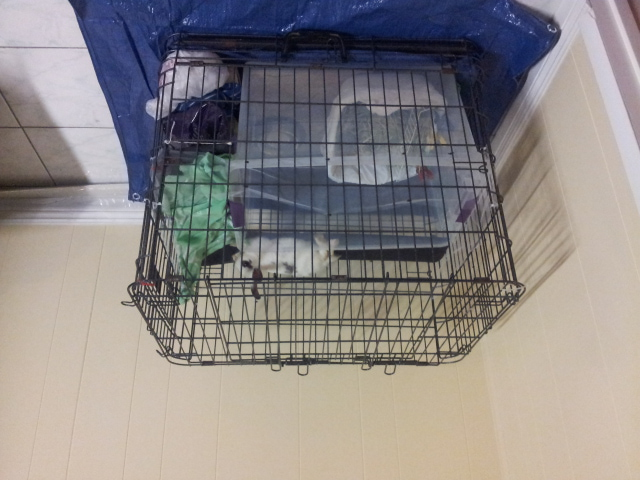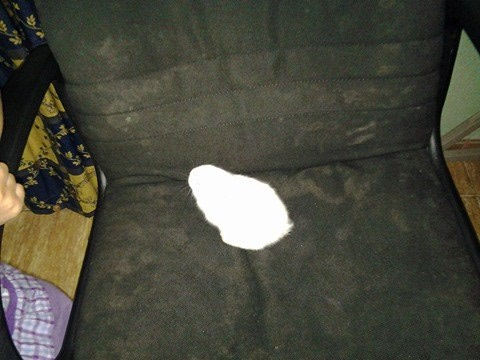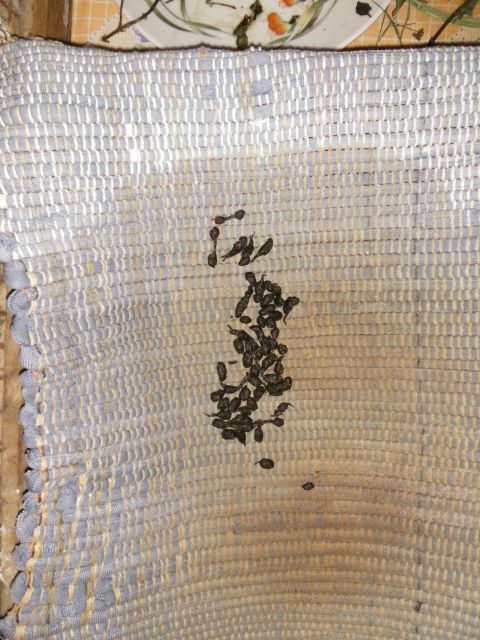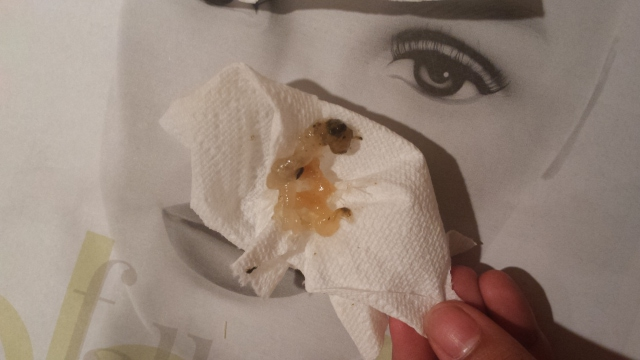QuestionQUESTION: Took Bunny for check-up three days after the operation - vet says all's well, and to give him the ten days of Baytril 2.5%.
Would you advise continuing antibiotics for longer? No tests were done on the abscess, or beads put inside - but it did say 'antirobe capsules 25mg 150' on the invoice - do you know how long this is effective? Thank you very much.
ANSWER: Dear Dinah,
Antirobe is clindamycin, which should *never* be given to rabbits, as it can cause fatal disruption of the intestinal flora. Please ask the vet about this, as I would hope that no one dispensed this to you accidentally.
Some vets will use clindamycin-impregnated beads at the site of an abscess, but I would be wary even of this, since some of the antibiotic could leach out and get into the mouth and be swallowed. Make *sure* what you got is Baytril, and don't give any until you are absolutely sure.
It's hard to say whether 10 days of Baytril would be enough. My vets would usually prescribe a course much longer for a known abscess, and we rarely use Baytril any more, as so many bacteria are becoming resistant to it. But time will tell. Keep a close eye on the site of the surgery, and make sure you go back for followup exams to be sure all is well and there's no recurrence of the infection.
I hope this helps.
Dana
---------- FOLLOW-UP ----------
QUESTION: When I collected Bunny from surgery, the vet told me he'd used the beads, though they weren't licensed for rabbits (as if he'd done me a favour!) - and that was four days ago - and luckily he's shown no sign of digestive trouble so far.
It is definitely Baytril. Bicillin isn't allowed in the UK.
Is there a next-best alternative? Thank you.
ANSWER: Dear Dinah,
Well, I know other vets who use clindamycin beads and swear they have no problems, so let's hope for the best. But it's good to keep an eye out for any sign of cecal dysbiois/runny poop, just in case.
Since bicillin is a combination of Penicillin-G Procaine and Benzathine, then the next best choice would be Pen-G injections, if the Baytril proves ineffective. You might want to ask your vet about this.
I've also wondered if Benzathine is allowed in the UK, since I know Pen-G is. If it is, I wonder if some willing vets might want to try administering them together, unless there is some contraindication.
Just some thoughts for the future that I hope you won't ever need.
Dana
---------- FOLLOW-UP ----------
QUESTION: It's now 12 days since the operation, and the skin on his cheek has gone hard and dead - the vet's not seen this before - and he says this will eventually drop off, like a scab, and underneath will either be another abscess, or (if we're extremely lucky) an open wound.
No luck with the pen-g injections, but I've just heard from someone with a similar story, whose vet put their rabbit on Baytril, and Flagyl(metronidazole) twice a day, after removing two teeth and the abscess. Flagyl is systemic for anaerobic bacteria in the bone - so could this still knock out any new abscess/the source of future abscesses in our Bun do you think?
Thank you very much for your continuing help and advice.
Dinah
AnswerDear Dinah,
eyuch. How extensive is the necrosis on his cheek? How big? This is not a nice thing, but it would probably be a good idea to find out what's underneath the dead tissue. If it's a ball of pus, then nothing is going to heal. An open wound, as the vet says, is much better.
But if there *is* a ball of pus, then the only thing I can suggest at this point is a very old-fashioned remedy that might just do the trick. It would be to remove all the necrotic tissue, debride out all pus possible, and then pack the wound with gauze soaked in 50% dextrose solution. This hypertonic solution will kill bacteria osmotically--there's no way they can develop resistance to what amounts to sugary napalm.
But the trick is this: You must change the dressing *at least* twice a day, or the dextrose will dilute such that it might actually promote bacterial growth. Keeping the dextrose at a very high, deadly-to-bacteria concentration will ensure no bacterial growth, and will allow granulation tissue to form underneath, healing the lesion.
We had amazing success with this protocol with our Maggie. She had an unbelievable retrobulbar abscess with fingers all the way back into her skull. But after 10 days of debridement and twice-daily fresh dressings (wet to dry or wet to wet) of 50% dextrose *the abscess was gone and never returned*. She was eight years old when we did this, and she lived to be 14 with no recurrence.
So this might be something to consider. But you don't want to wait *too* long, if there is pus underneath. Bacterial growth will destroy and necrotize healthy tissue that bun will need for a good healing bed.
You might want to talk this over with your vet. Not many people use this treatment any more, but it's a pity they don't. It's very old, but it WORKS. I know other vets who have tried this at my suggestion and that of the vet who did it, and they, too, had excellent results as long as they *changed the dressings twice a day*. That is really critical to the success of the procedure.
I hope this helps!
Dana

 habitat?
Question
cage
Hi, im kaitlyn.
I have a bunny an
habitat?
Question
cage
Hi, im kaitlyn.
I have a bunny an
 Answer Fast Please
QuestionFemale Rabbit
Female Rabbit
QUEST
Answer Fast Please
QuestionFemale Rabbit
Female Rabbit
QUEST
 Spencers Update!!!
Questionpoop
poop
QUESTION: Hi Dana Madam
Spencers Update!!!
Questionpoop
poop
QUESTION: Hi Dana Madam
 Very Urgent, its weekend, no vet available.
Question
2nd poop
Yesterday my rabbit who is abo
Very Urgent, its weekend, no vet available.
Question
2nd poop
Yesterday my rabbit who is abo
 Is my newly found rabbit a pet or wild rabbit?
Question
Elfie
Hi, Im hoping you can help me figure out
Is my newly found rabbit a pet or wild rabbit?
Question
Elfie
Hi, Im hoping you can help me figure out